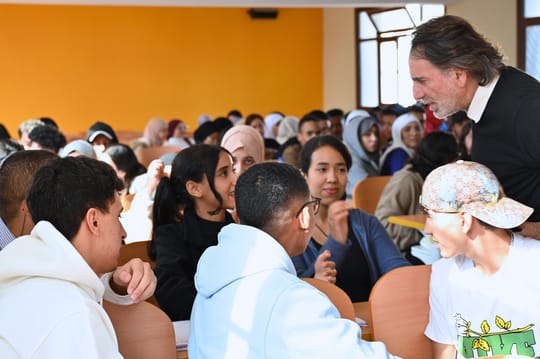By Dr. Yossef Ben-Meir, HAF President
September 28, 2015
Dr. Yossef Ben-Meir discusses the goals of Gender and Development (GAD) and HAF’s work on gender empowerment in Morocco.
Gender and Development (or Gender Empowerment) refers to measures needed to give women more control over their lives. Among the goals of GAD is increasing women’s participation in decision-making in development, which in turn increases self-reliance and self-confidence as indigenous voices are integrated into the process.[i] Another important goal of GAD is to incorporate gender into the project cycle, a process that requires linking gender analysis and participatory methods (methods are not automatically gender-sensitive).[ii] Participatory gender data gathering methods include, for example, the triple role, gender needs assessment, and the GAD matrix.[iii] These enhancements enable participatory methods to be more equitable in their application and to allow for political solutions to emerge[iv] – and thereby challenge gender relations and root causes of women’s marginalization and subordination.[v] The approach reconfigures the rules of interactions in public spaces so that participants exercise voice and that decision-making is democratized.[vi]
In order for participatory methods to be effective, they need to be designed so the information they help to gather 1) accounts for the range of perspectives and challenges of women, 2) involves and impacts their relationships with men, and 3) incorporates sustained and deliberative processes – and not one-off performances.[vii] In addition, to help ensure that these kind of processes can continue, the participatory approach should also address social and economic structures at different levels, which are constraints for women’s advancement. However, development workers still need to better translate GAD theory into methodologies. As practitioners adapt established techniques in new ways, a result could be entry of partial, invalid, or unreliable data, which the sequencing of techniques may be able to address.[viii]
Participatory approaches provide an “important mechanism to overcome apathy and lack of confidence, make women visible in the community, show them the potential of self-help solutions, and raise awareness that women can play an important role in solving problems.”[ix] In order to create successful processes, NGOs are increasingly identified as the “institutional solution” because participation is essential and they have the capacity to reach the grassroots.[x] Finally, incorporating GAD theory into the training of participatory facilitators is an important step.[xi]
HAF has developed a number of new proposals to advance experiential training in multiple provinces in Morocco that build the ability of local women in facilitating community planning of development, and addressing the root causes of rural poverty through the promotion of green growth. HAF has successfully implemented this program, with funding support from the Middle East Partnership Initiative, in the Rhamna province; with the National Endowment for Democracy in the Al Haouz, Boujdour, Taroudant provinces; and with the Bureau of Oceans, Environment and Scientific Research at the U.S. Department of State in the Azilal and Taroudant provinces.
We are ready for greater scale. HAF and the people need and seek your partnership, friendship and support. Please consider becoming a HAF Member – to achieve gender empowerment in Morocco.
Find more photos here: https://www.flickr.com/photos/highatlasfoundation/18759386424/in/album-72157655398101021/
Follow HAF on Twitter @HafFdtn or like us on Facebook
Learn more at www.highatlasfoundation.org
For more information please contact: HAF@highatlasfoundation.org ; +212 (0) 5 24 42 08 21
Anthony Bald, Intern
[i] B. Kirshner, J. O’Donoghue, and M. McLaughlin, M. (eds.) Youth Participation: Improving Institutions and Communities (San Francisco: Jossey-Bass, pp. 27-46, 2002).
[ii] M. Humble, “Assessing PRA for Implementing Gender and Development,” in I. Guijt and M.K. Shah (eds.) The Myth of Community: Gender Issues in Participatory Development (London: ITDG Publishing, p. 36, 1998).
[iii] C. Moser, Gender Planning and Development, Theory, Practice and Training (London: Routledge, p. 76, 1993).
[iv] A. Cornwall and G. Pratt, “Introduction,” in A. Cornwall and G. Pratt (eds.) Pathways to Participation: Reflections on PRA (London, England: Intermediate Technology Development Group, pp. 1-10, 2003).
[v] H. Crawley, “Living Up to the Empowerment Claim? The Potential of PRA,” in I. Guijt and M.K. Shah (eds.) The Myth of Community: Gender Issues in Participatory Development (London: ITDG Publishing, p. 24-34, 1998).
[vi] Cornwall, 2003:10
[vii] Ibid.
[viii] J. Campbell, “Participatory Rural Appraisal as Qualitative Research: Distinguishing Methodological Issues from Participatory Claims” (Human Organization, vol. 60, no. 4, pp. 386, 2001).
[ix] Moser, 1993:101
[x] Ibid., 91
[xi] Humble, 1998:44
